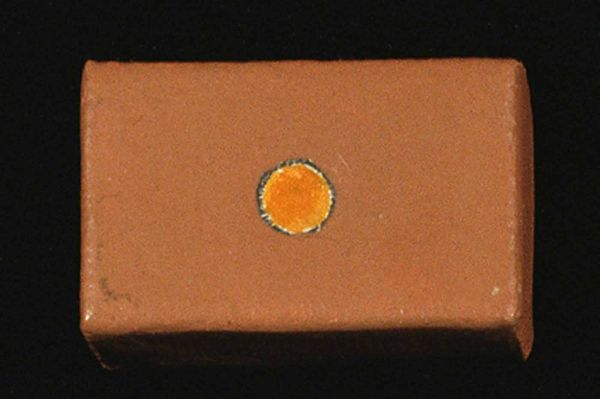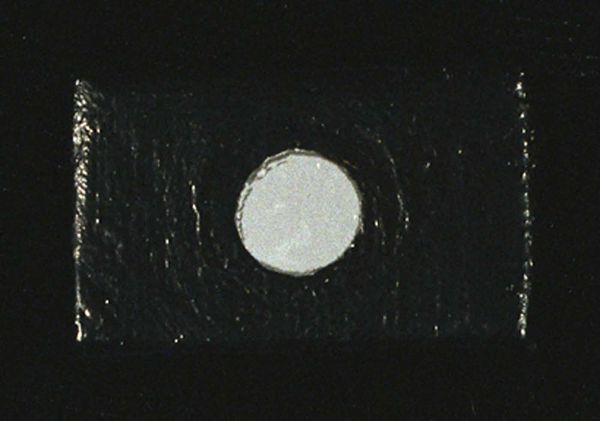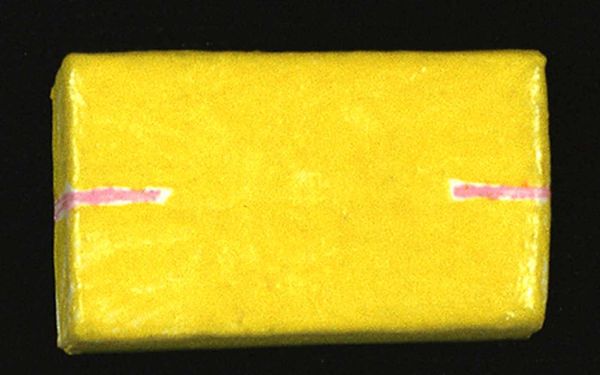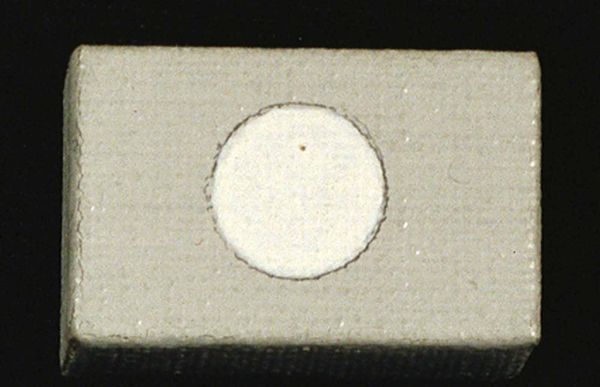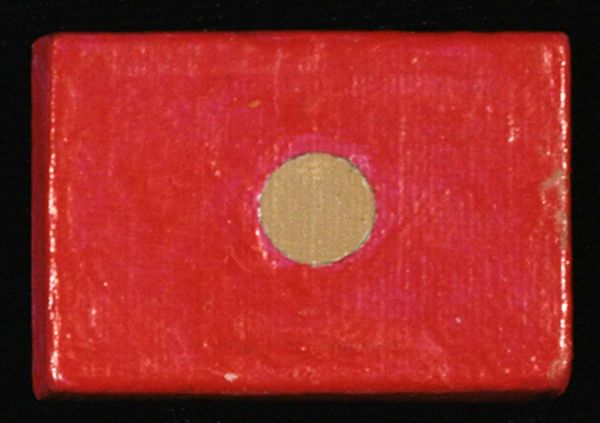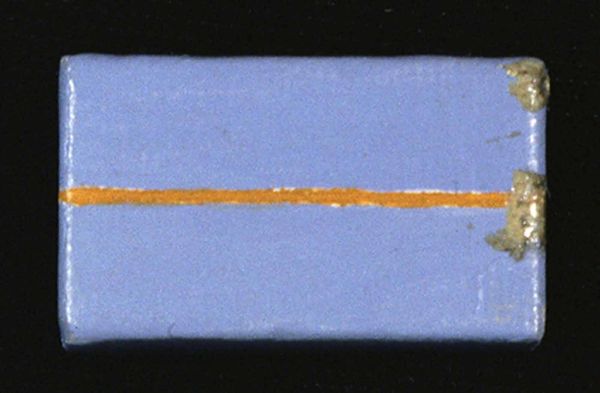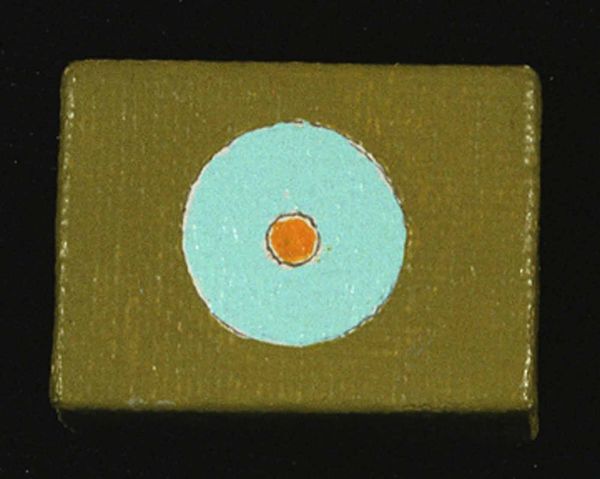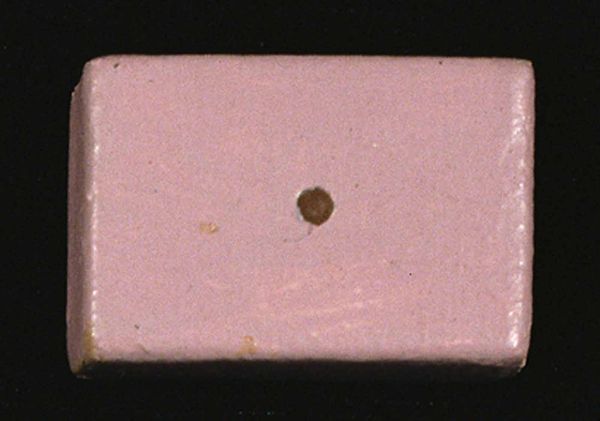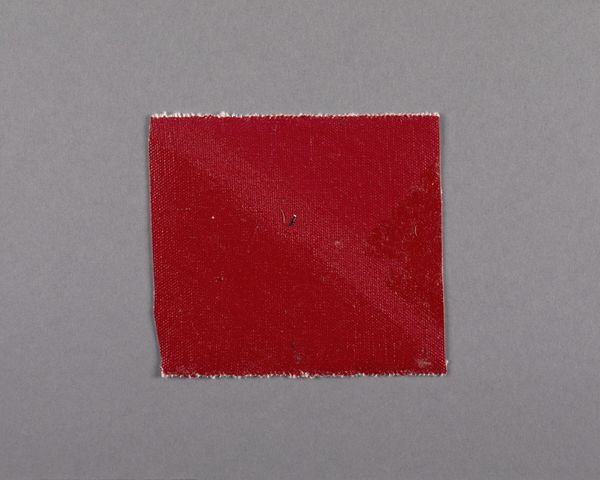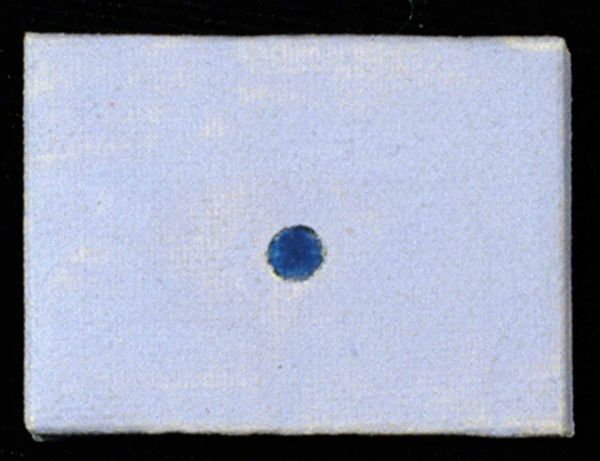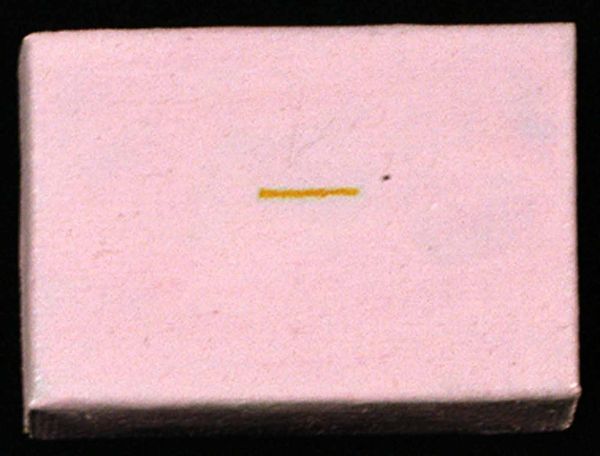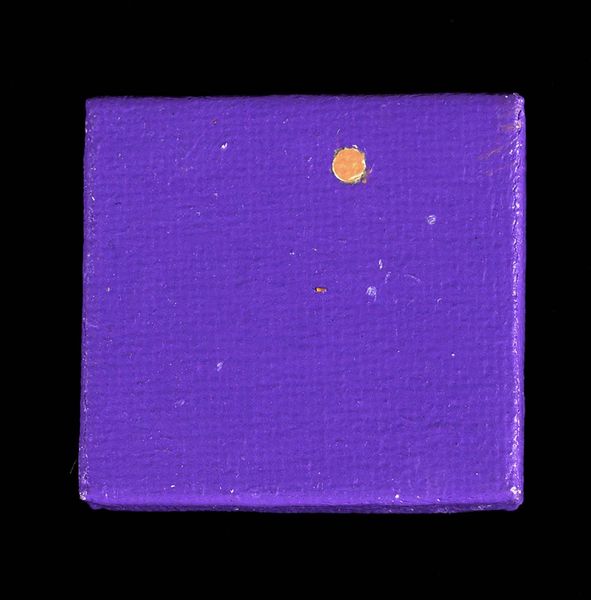
acrylic-paint
#
abstract-expressionism
#
acrylic-paint
#
geometric
#
abstraction
#
monochrome
Copyright: Gene Davis,Fair Use
Editor: This is Gene Davis's "Micro-Painting" from 1968, created with acrylic paint. It's surprisingly small, a little green rectangle with a yellow dot. I'm struck by the… almost manufactured look of it, despite being a painting. What do you see in it? Curator: It's fascinating how Davis challenges traditional notions of painting with this piece. Instead of focusing on grand gestures and illusionism, it seems to emphasize the physicality of paint and the act of application itself. Look at the texture of the green; you can practically feel the brushstrokes, suggesting a deliberate, almost repetitive, process. The yellow dot, in its simplicity, underscores this emphasis on basic elements. What was the method involved in this “Micro-Painting”? What specific tools, such as the brand and kind of brushes, were utilized? I wonder how all of that would affect its making… Editor: That's interesting. It makes me think about the role of labor in creating art. Was Davis consciously reacting to Abstract Expressionism’s heroic painter ideal, emphasizing, instead, a more workmanlike approach? Curator: Precisely. Davis might be critiquing the idea of the artist as a solitary genius, replacing it with an emphasis on the physical properties of the material, on the act of production, thereby, blurring the lines between “high art” and craft. Do you feel the "Micro-Painting" reflects social issues related to labor at the time of production? Editor: I can see that; It reminds me of some minimalist sculpture emphasizing materials and the manufacturing processes. Looking at the time frame it was painted, there are obvious parallels with Pop Art using commercial and industrial material for art purposes, too. Curator: Indeed, examining art through a materialist lens really shifts the focus from symbolic meaning to the socio-economic conditions of its production. I find that extremely thought-provoking. Editor: I agree, analyzing the 'how' and 'why' behind the piece enriches how we look at art history. I’ll be viewing abstraction through a new lens from now on.
Comments
No comments
Be the first to comment and join the conversation on the ultimate creative platform.
